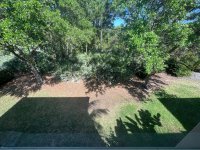- Jul 21, 2013
- 65,170
- Pool Size
- 35000
- Surface
- Plaster
- Chlorine
- Salt Water Generator
- SWG Type
- Pentair Intellichlor IC-60
ice.1) It was suggested by a TFP regular that we should have a pump for the waterfall wall, a pump for the pool, and a pump for the spa. My pool guy really believes we only need a single 2.7hp pump for the pool and spa (and yes, a separate pump for the waterfall wall). The logic is that the pump will only be servicing either the spa or the pool at the same time. When we are in the spa, it will be servicing the spa (if there are people also in the pool, it doesn't need to really service the pool, servicing the pool can wait). When we finish with the spa and switch it to pool mode, it can just service the pool again.
The pool pump must run through the filter and heater. They both restrict the maximum flow you can get from the pump compared to a spa jet pump that is unrestricted and not running through a filter and heater.
It is all about what you will feel is adequate pressure out of the spa jets. You will get more flow and pressure from a dedicated spa jet pump then from a pool pump running through the filter and heater.
The only thing I can think of is, but what if you need the pool to stay warm...people are in the hot tub and the pool folks will start to slowly get colder since the pump is servicing the hot tub and not the pool at the moment. But how fast will a warm pool lose temperature as other people spend time in the hot tub - and do I need a third pump simply for that reason?
No, not for that reason. Even if you have a third pump you only have one heater which can only heat the pool or spa.
The pool will lose temperature slowly once you have it up to temperature. It is a big heat sink.
With three pumps when using your spa you will have the pool pump sending heated water to the spa through two spa returns while the spa jet pump sends higher pressure water to the spa jets.
What am I not thinking through here?
What GPM flow will be adequate for your spa jets?
How many jets will you have in your spa?
What is the maximum flow rate you can get from a pump through the filter and heater?
What is the maximum flow rate a dedicated spa jet pump can give?
Divide those flow rates by the number of jets to get the Flow rate from each jet.
Typically people are looking for 12-15 GPM flows from spa jets for good massage pressure.
2) Here's a diagram of the therapy jet layout of an 8' by 8' recessed spa we want. The triangle in the bottom left is the step we are adding to help people get into the hot tub without having to step down 18 inches to the bench. h means high-height jet at around 12 inches from the bench. m means medium-height jet at around 9 inches from the bench, and l means low-height jet, at 6 inches from the bench. What do you think?
I think it is overly complicated and not sure how you envision people using it.
3) TPF regulars suggested a larger cartridge, 400-500sq feet. My guy says they can do the Jandy CV 460 but says it has four or five cartridges that you are cleaning out, not one. So I'm basically increasing my workload by getting a larger cartridge. One of us is confused. Actually, I am definitely confused and he may be too. Please help!
What help do you need?
What is the problem with cleaning four cartridges in a batch once or twice a year?
4) I have heard the iAqualink RSP8 doesn't require a new motherboard for firmware updates (a TFP regular said I would need a new board...and for that reason go with Pentair or Hayward. If I'm right, I shouldn't be deterred from getting the Jandy system here...thoughts? I can always call Jandy to confirm.
Yes, that is what I said in an earlier post. I can ask @PoolGate to confirm.
That is not reason not to go with Jandy, just be aware of what you are getting and its limitations.
5) I've been told three returns will be sufficient, I don't need four, even though I've read if I have a rectangular pool it may be best to have a return on all four sides. Should I insist on four?
Really does not matter. You will see no operational difference in your pool with 3 or 4 returns.
6) According to the pool guy, I will have one skimmer, but if I want another, it's another $500 (which of course I don't mind if we want to insist)...but here's the thing - we will have a screened cage over the pool for sure. So, that will drastically cut down on debris.
Get 2 skimmers. If your one skimmer has a problem your whole pool is down. With two skimmers and one has a problem the pool will run fine on one.
In addition if someone stands in front of your one skimmer and blocks it your pump will run dry. With two skimmers and one is blocked for whatever reason the pump continues to run fine.
Getting one skimmer is false economy considering what you are spending on the pool.



